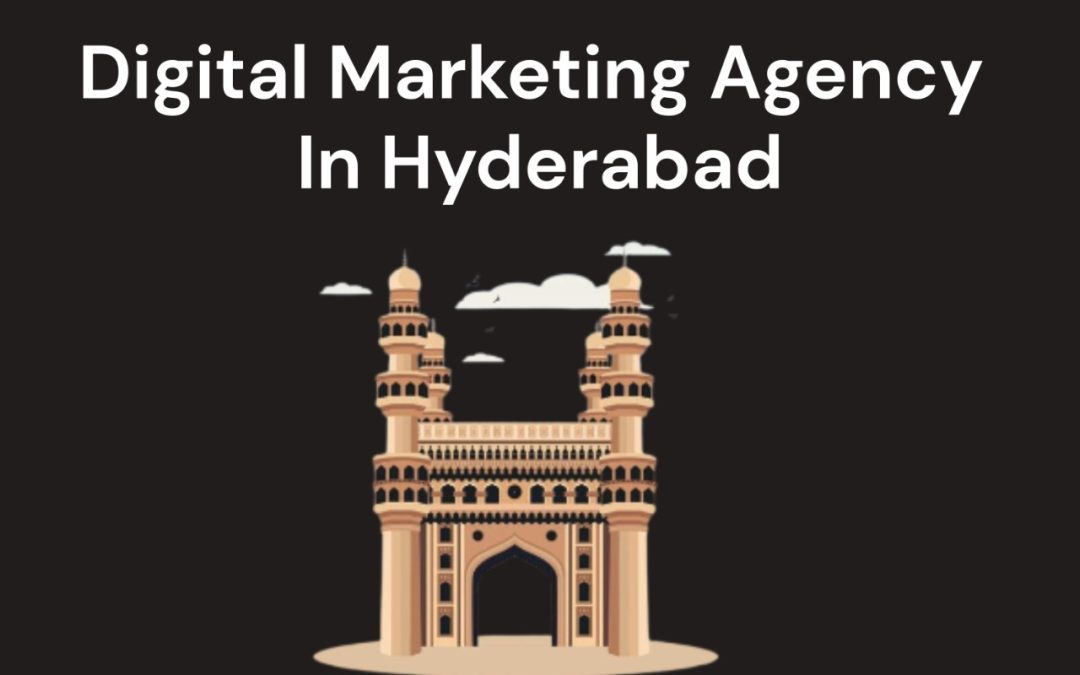
by Shashikanth Heerekar | Jul 15, 2025 | All Things about Marketing, Uncategorized
Discover the top ten digital marketing agencies in Hyderabad, starting with Oxygenites.com and Extranet Digital, Techdr. Explore expert services, including SEO, social media marketing, and PPC, that help businesses grow online with proven strategies.
Introduction
Hyderabad is rapidly emerging as one of India’s premier digital marketing hubs, providing world-class services across diverse industries. From SEO and social media marketing to paid campaigns and web development, the city is home to several agencies that help brands thrive online. Whether you’re a startup or an established company, partnering with the right digital marketing agency can amplify your growth.
Below is a list of the top ten digital marketing agencies in Hyderabad, starting with one of the pioneers in the industry—Oxygenites.com.
Oxygen
With over 13 years of experience, Oxygenites.com has emerged as a trailblazer in the digital marketing space. The agency provides a full suite of services, including SEO, PPC, social media marketing, web development, content marketing, graphic design, and branding solutions. Their data-driven strategies and client-centric approach make them a go-to agency for businesses of all sizes.
What sets Oxygenites apart is their commitment to results. They combine technical expertise with creative storytelling to build powerful digital presences. Whether it’s ranking on search engines or running impactful ad campaigns, Oxygenites consistently delivers measurable growth. Their long-standing success and trusted reputation make them a top choice among digital marketing agencies in Hyderabad.
Contact Details
Extranet Digital
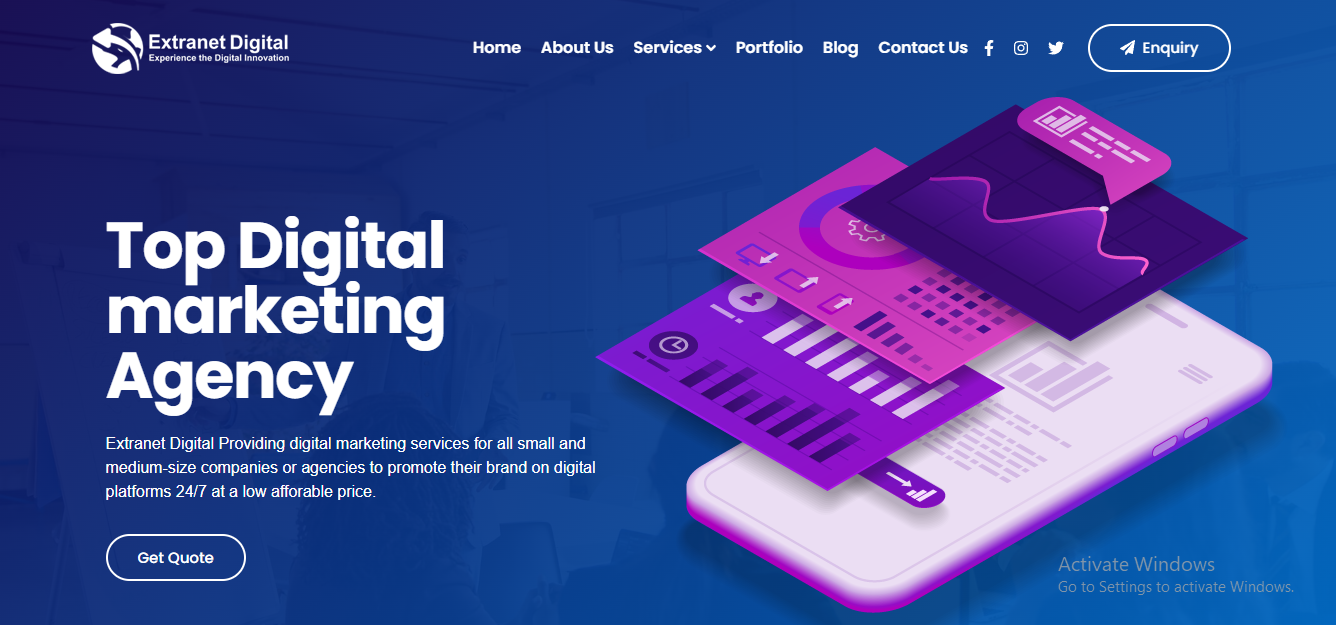
Extranet Digital
Extranet Digital is a dynamic and innovative digital marketing agency based in Hyderabad, known for offering cutting-edge services tailored to modern business needs. Their expertise spans search engine optimization (SEO), social media marketing, Google Ads, lead generation campaigns, and content marketing—all essential components of a successful digital strategy.
Delivering value through performance marketing and campaigns that yield tangible outcomes is the agency’s primary goal. A team of experienced professionals crafts strategies that align with client goals and industry trends, making them a reliable partner for growing online visibility and ROI. With a strong focus on digital transformation, Extranet Digital continues to help brands scale in today’s competitive landscape.
Contact Details
Techdr
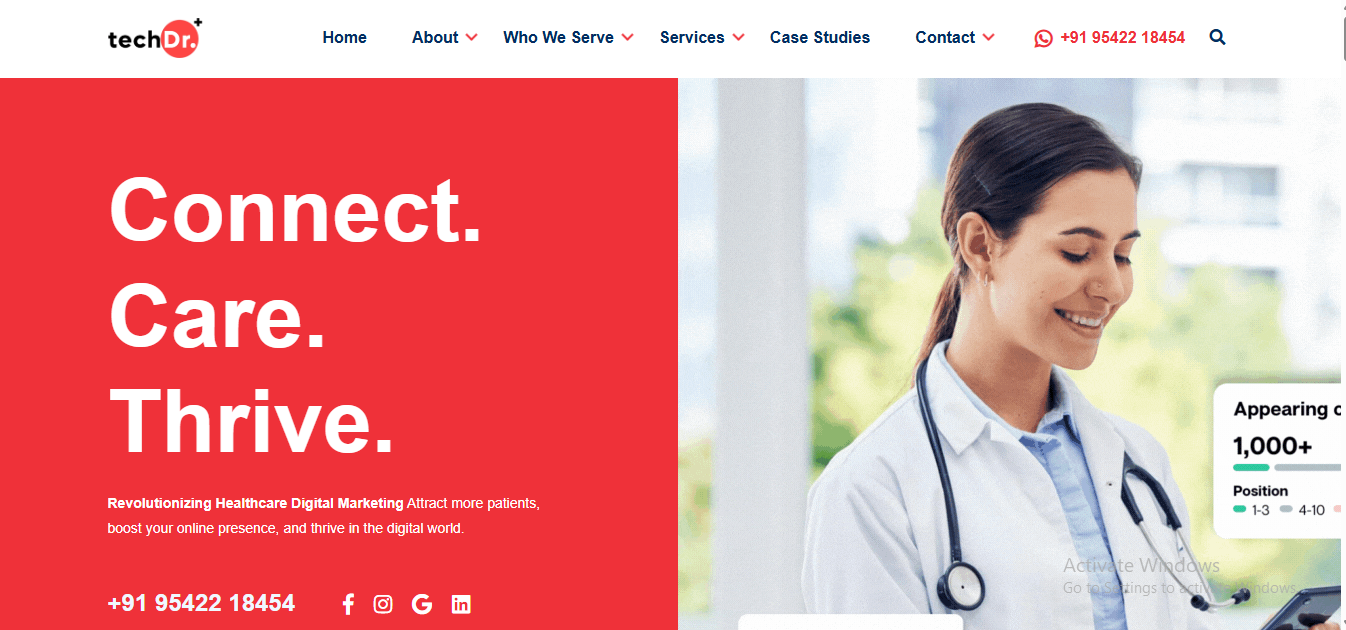
Techdr
TechDr.in delivers a well-rounded suite of digital marketing services tailored to modern business needs. Their offerings include SEO, PPC advertising, content marketing, social media marketing, local SEO, reputation management, and web development—covering every essential area of digital marketing execution. This balanced approach enables brands to establish a robust online presence, generate high-quality leads, and enhance their credibility.
What stands out about this agency is its focus on local SEO and reputation management, both of which are crucial for businesses targeting specific regions and maintaining a trustworthy brand image. With a clear structure and diverse service offerings, Techdr. aligns with the best practices outlined in leading digital marketing institutes. Their solutions support digital transformation across industries, ensuring that businesses remain competitive in an evolving digital landscape.
Techdr.in is a comprehensive digital marketing platform that expertly blends industry-specific solutions with full-scale digital services. Specializing in sectors such as dermatology, dentistry, fertility clinics, orthopedics, and plastic surgery, Techdr.in has positioned itself as a trusted partner for medical professionals seeking growth and visibility in the digital space.
Contact Details
Digital Intek
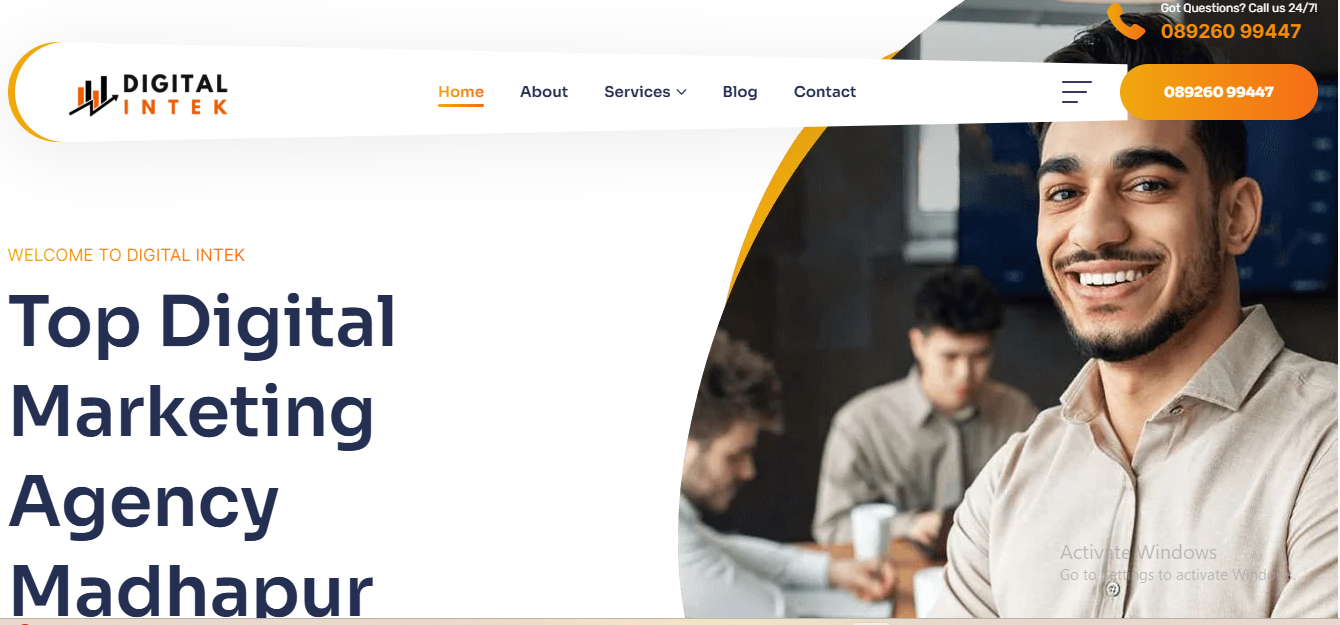
Digitalintek
Digital Intek delivers a powerful suite of services tailored for businesses seeking reliable digital marketing solutions. As a digital marketing agency in Hyderabad, they offer a comprehensive blend of SEO services, Google Ads, GMB SEO, SMO services, and web design & development.
Their strength lies in their ability to create customized strategies that align with business goals, drive qualified traffic, and increase brand visibility. With an emphasis on data-driven campaigns and creative execution, Digital Intek has positioned itself as a results-oriented agency contributing to the digital success of brands across various industries. Their presence and performance make them a valuable addition to Hyderabad’s competitive digital marketing landscape.
Contact Details
Conclusion
Hyderabad has established itself as a thriving hub for digital marketing, offering a diverse range of services that empower businesses to build a strong online presence. From SEO and social media management to paid advertising, content marketing, and web development, the city’s agencies cater to brands seeking measurable growth and digital transformation. With a focus on innovation, performance, and data-driven strategies, these digital marketing experts help businesses stay competitive in an ever-evolving online landscape, making Hyderabad a preferred destination for brands looking to expand their reach and achieve sustainable success.
FAQS
1. Digital marketing agencies in Hyderabad offer what essential services?
A. Most digital marketing agencies in Hyderabad provide services like SEO, social media marketing, pay-per-click advertising (PPC), content marketing, email marketing, and web development to enhance online visibility and business growth.
2. How can a digital marketing agency help my business grow?
A. A digital marketing agency can help generate more leads, improve search engine rankings, boost brand awareness, and increase sales through tailored online marketing strategies.
3. Are digital marketing services suitable for small businesses or startups?
A. Yes, many agencies offer scalable and affordable digital marketing packages that are perfect for startups and small businesses looking to build their online presence.
4. What industries do digital marketing agencies in Hyderabad usually serve?
A. They serve a wide range of industries, including healthcare, e-commerce, education, real estate, IT, hospitality, and local businesses, offering customized solutions based on business goals.
5. What makes Hyderabad a good city for digital marketing services?
A. Hyderabad is a major tech hub in India, with access to skilled professionals, advanced technology, and a growing digital ecosystem—making it a hotspot for quality marketing services.
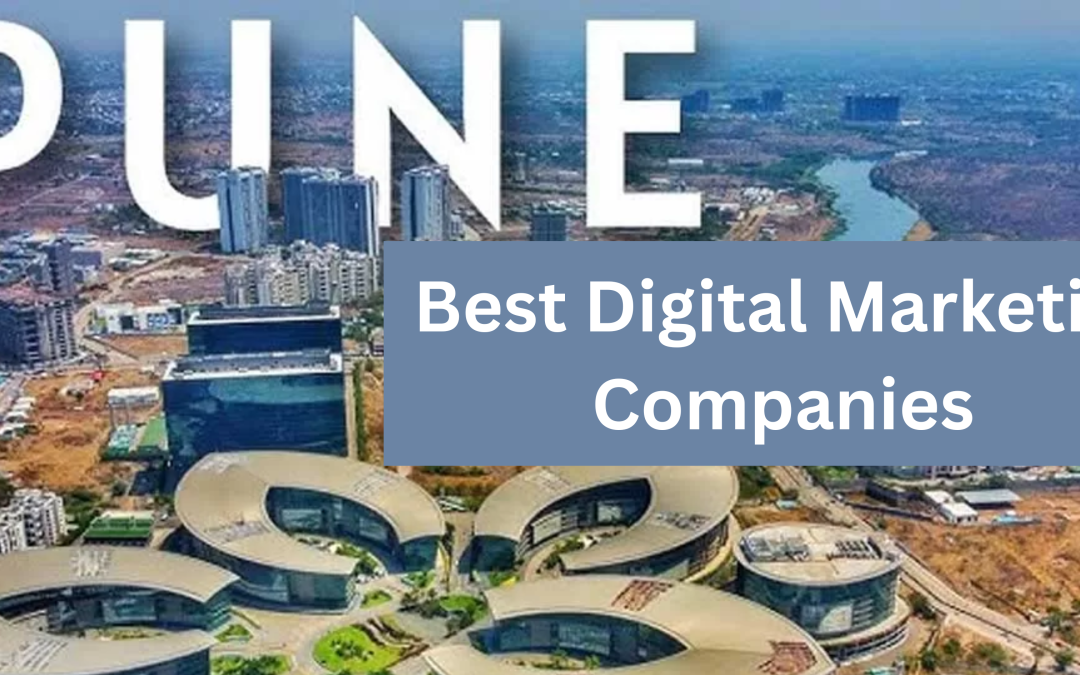
by Shashikanth Heerekar | Jul 15, 2025 | Uncategorized
Explore the leading digital marketing companies in Pune, specialising in web design, content marketing, and digital strategy to drive business success.
Introduction
In today’s competitive business world, having a strong online presence is no longer optional—it’s a must. Whether you run a small business, startup, or large enterprise, digital marketing helps you connect with your target audience, build your brand, and generate consistent leads. With more people searching, shopping, and spending time online, businesses need smart and effective digital strategies to grow.
This is where a professional digital marketing company in Pune can make all the difference. Pune, being one of India’s fastest-growing tech hubs, is home to many businesses competing for digital visibility. Choosing the right digital marketing partner ensures that your brand stands out in a crowded online space, reaches the right audience, and delivers real results.
From improving your search engine rankings with SEO to running high-converting ad campaigns, managing social media, and building responsive websites, digital marketing covers it all. The key is to work with a company that not only understands your business goals but also provides tailored strategies to achieve them.
If you’re looking for the best digital marketing company in Pune that offers a perfect mix of creativity, experience, and performance, DigiCompanions is a name you can trust.
Oxygen
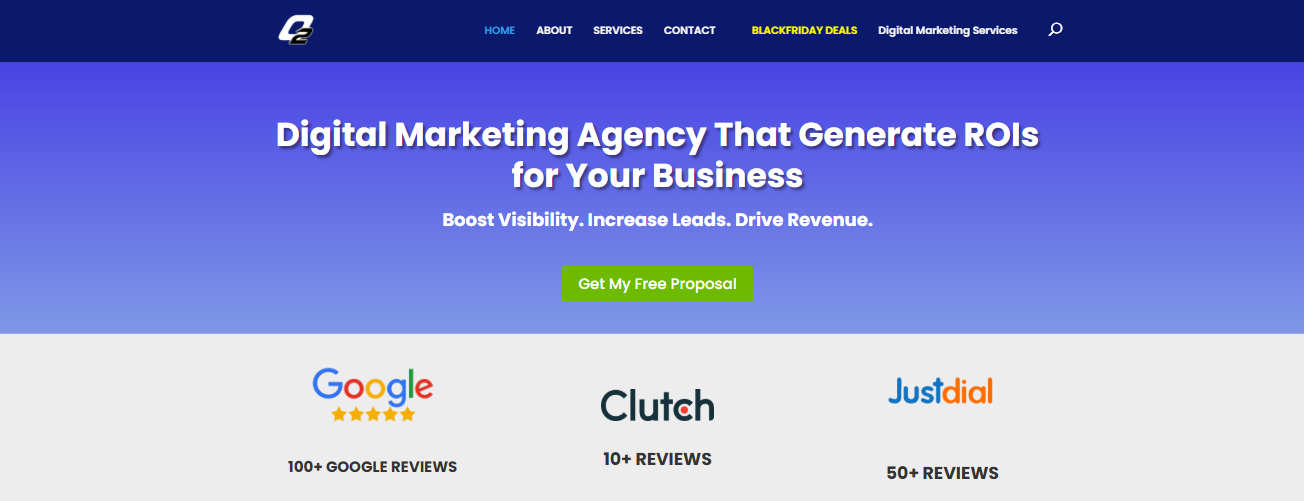
A Trusted Digital Marketing Company in Hyderabad with 13 Years of Excellence. Though based in Hyderabad, Oxygen has gained significant traction among businesses in Pune for its highly targeted digital marketing solutions. With 13 years of consistent service and excellence, Oxygen has built a solid reputation for offering top-notch services like SEO, Google Ads, social media marketing, content marketing, and more.
Clients consistently praise Oxygen for its transparent communication, results-driven approach, and customized strategies that align with unique business goals.
Oxygen’s commitment to continuous improvement and client satisfaction truly sets it apart. Its seasoned team of digital marketing experts is known for delivering measurable ROI and adapting to the latest trends and technologies. Many businesses in Pune prefer Oxygen for its ethical SEO practices, creative content campaigns, and unmatched support.
Location
Hyderabad (Serving clients across Pune)
Digital Marketing Services Offered
- Search Engine Optimization
- Website Design and Development
- Social Media Marketing
- Video Production
- E-commerce Marketing
Key Highlights
- 13+ Years of Experience
- Transparent Communication
- Customized Marketing Strategies
- Creative & Data-Driven Campaigns
- Trusted by Businesses in Pune & Beyond
Contact Details
📞 Phone: 91 9885346295
📧 Email: [email protected]
🌐 Website: https://oxygenites.com/
DigiCompanions
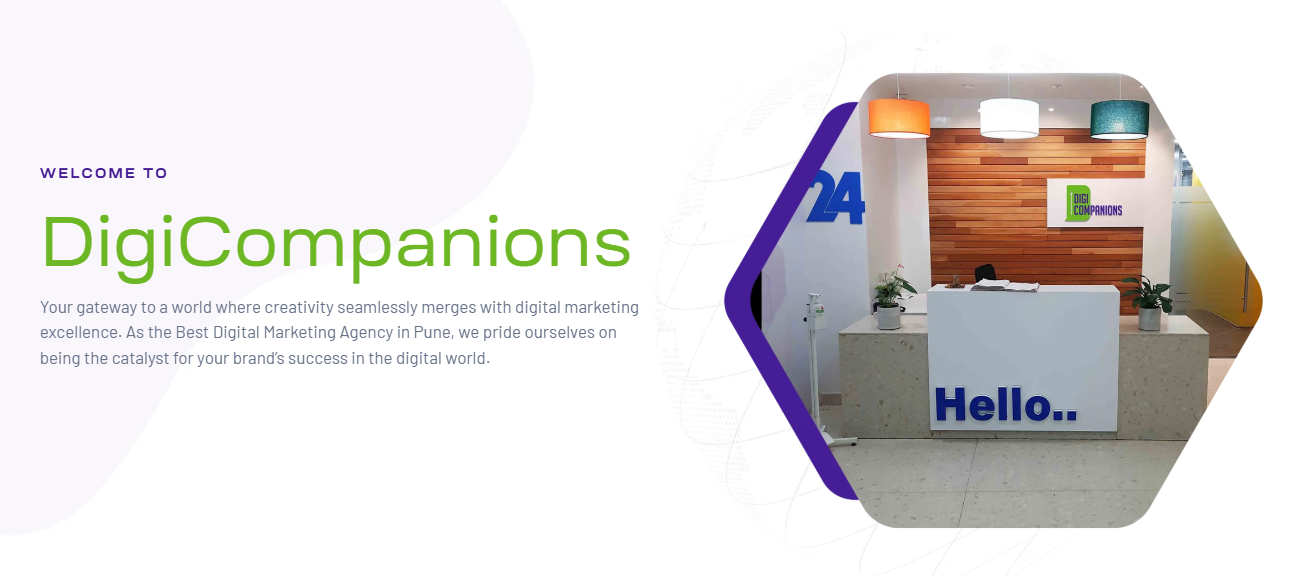
DigiCompanions is a leading SEO and digital marketing company based in Hinjewadi, Pune. Established in 2021, the company has quickly built a strong reputation for delivering high-quality digital marketing services that help businesses grow online. With a focus on creativity, results, and client satisfaction, DigiCompanions is now one of the most reliable names for SEO in Pune.
Their expert team offers end-to-end digital marketing solutions, including SEO, SMM (Social Media Marketing), Website Development, and Ad Management. With over 150+ clients served, DigiCompanions knows how to build successful strategies that boost visibility, drive traffic, and improve online presence.
What makes DigiCompanions stand out is their ability to create customized packages that fit the unique needs of each business. Whether you’re a small startup or an established company, they provide creative, tailored solutions that help you stand out in the competitive digital space.
Location
Hinjewadi, Pune
Digital Marketing Services Offered
- SEO (Search Engine Optimization)
- SMM (Social Media Marketing)
- Website Development
- Ad Management
Key Highlights
- Established in 2021
- 150+ Clients Served
- Customized Packages Available
- Expert & Creative Team
- Result-Driven Strategies
- Full-Service Digital Marketing Solutions
Contact Details
📞 Phone: 9766362072
📧 Email: [email protected]
🌐 Website: https://digicompanions.com/
Digitalmeliora Technologies Pvt Ltd
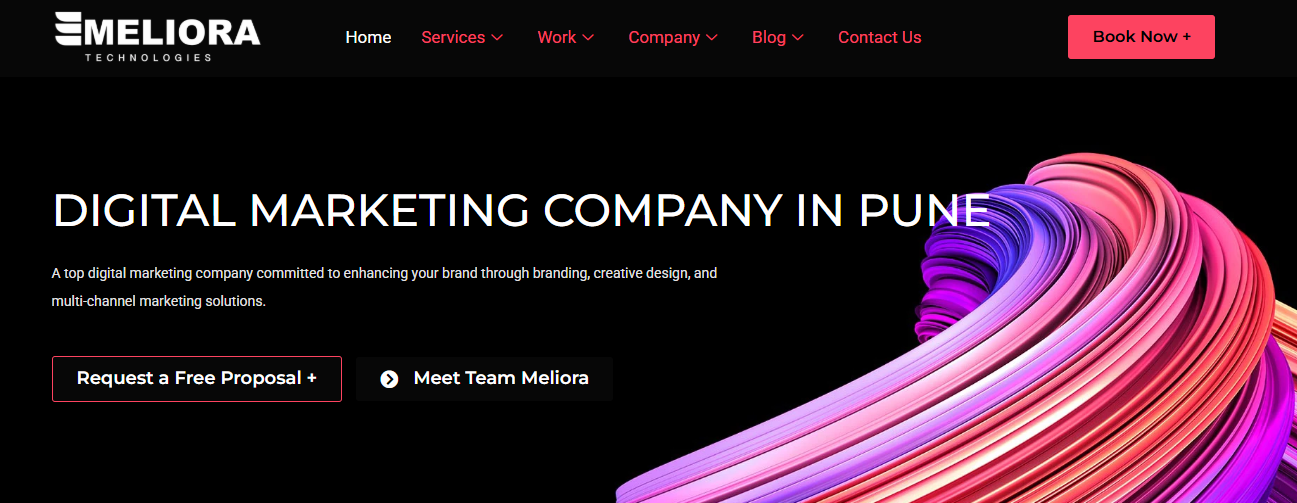
Digitalmeliora Technologies Pvt Ltd is a fast-growing digital marketing and SEO company based in Pune. Established in 2024, the company is driven by a clear vision—to reshape the digital space with creativity, smart strategies, and a strong commitment to client success. Known for their result-oriented approach, Digitalmeliora stands out by going beyond traditional methods to deliver customised and effective solutions.
The expert team at Digitalmeliora offers a full range of digital marketing services, including SEO, AI in SEO, Social Media Marketing, and Web Development. With 150+ clients served, they bring deep industry insight and innovative thinking to every project, helping businesses boost their online presence and achieve lasting growth.With their strong focus on performance and innovation, they are quickly being recognized as one of the best SEO companies in Pune.
What makes Digitalmeliora unique is their focus on tailor-made strategies. They understand that every business has different goals and challenges, and they provide fully customizable packages to match those specific needs. Whether you’re a startup or an established business, they have the expertise to help you rise above the competition.
Location
Pune
Digital Marketing Services Offered
- SEO (Search Engine Optimisation)
- AI in SEO
- Social Media Marketing
- Web Development
Key Highlights
- Established in 2024
- 150+ Clients Served
- Customised Packages Available
- Specialising in SEO
- Creative & Strategic Team
- Full-Service Digital Marketing Solutions
Contact Details
📞 Phone: 7875544468
📧 Email: [email protected]
🌐 Website: https://melioratechnologies.com
Digital Mogli LLP
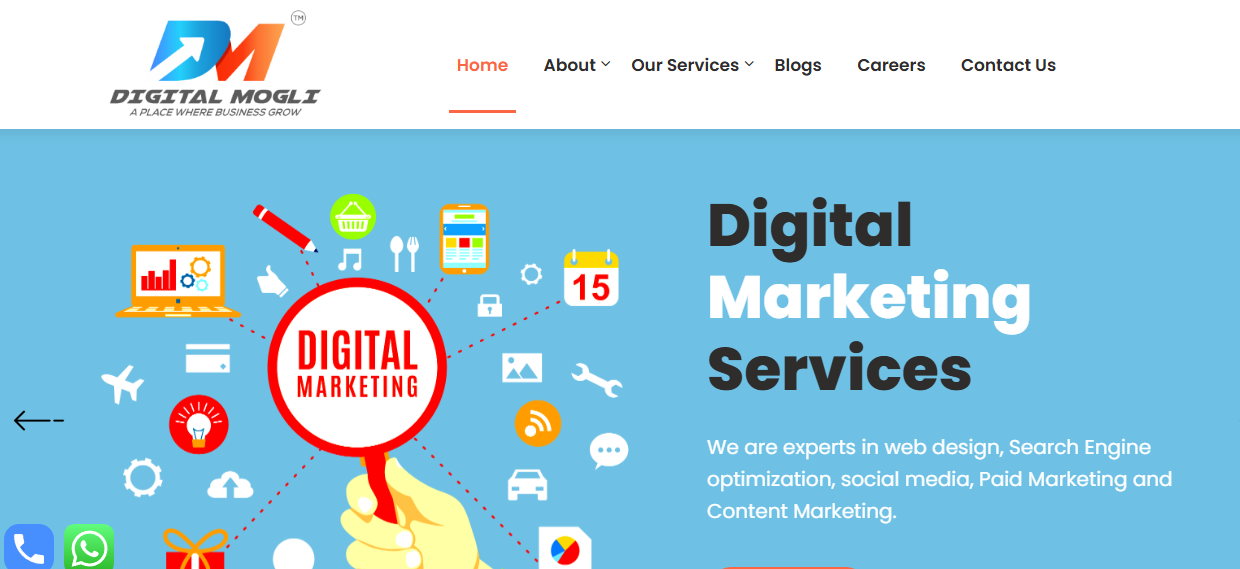
Digital Mogli LLP is a top-rated website development and digital marketing agency located in Pimpri Chinchwad, Pune. Established in 2019 by experienced professionals, the company has quickly made its mark by offering strategic digital solutions that help businesses achieve their goals online. With a perfect blend of experience and innovation, Digital Mogli has become one of the most trusted digital marketing agencies in Pune.
The company offers a wide range of services, including Website Design, SEO (Search Engine optimisation), Social Media Marketing, Paid Marketing, and Content Marketing. Their expert team deeply understands business needs and works closely with clients to deliver customised strategies that drive results and ensure long-term success.
What makes Digital Mogli stand out is its strong focus on strategy, creativity, and tailored solutions. Whether you’re building a brand from scratch or improving your online visibility, Digital Mogli provides effective digital services to help you succeed.
Location
Pimpri Chinchwad, Pune
Digital Marketing Services Offered
- Website Design
- SEO (Search Engine Optimisation)
- Social Media Marketing
- Paid Marketing
- Content Marketing
Key Highlights
- Established in 2019
- 150+ Clients Served
- Customised Packages Available
- Experienced & Strategic Team
- Goal-Oriented Campaigns
- Complete Digital Marketing Services
Contact Details
📞 Phone: 8668493250
📧 Email: [email protected]
🌐 Website: www.digitalmogli.com

by Shashikanth Heerekar | Jul 11, 2025 | SEO News
Discover all the key features and changes in the YouTube update on July 15, 2025. From algorithm tweaks to monetization updates, stay ahead with this detailed breakdown.
Introduction
The digital landscape never sleeps—and if you’re a YouTuber, you’re probably still recovering from the shockwave that hit the creator community on July 15, 2025. YouTube’s latest update has stirred up both confusion and concern, especially around monetization policies. Whether you’re a veteran creator or just starting to build your channel, this update demands your attention.
Overview of the Monetization Update: What You Need to Know
On July 15, 2025, YouTube quietly rolled out one of its most impactful monetization updates in recent memory. This wasn’t just a backend tweak or a cosmetic UI change—it fundamentally redefines what types of content can make money on the platform.
At the heart of this update is YouTube’s renewed focus on “originality and viewer value.” That means content that’s repetitive, non-transformative, or repurposed from other sources without meaningful commentary or editing is now being flagged as ineligible for monetization.
Key updates include:
- Stricter evaluation of reused content with little or no original input.
- Automated and manual reviews to assess whether a video meets “transformative” standards.
- Updated definitions of spam and deceptive content.
- The new appeal process for demonetized channels or videos.
YouTube’s official blog post on the update stated:
“We’re refining our monetization policies to better support creators who bring fresh perspectives and unique value to our viewers. Repetitive or unoriginal content may not meet our current eligibility standards.”
What’s notable here is the emphasis on “unique value.” Reaction videos that stitch in another creator’s content without commentary or channels that recycle TikToks or Instagram Reels in bulk may now be in violation—even if they previously monetized successfully.
This isn’t the first time YouTube has revised its monetization policies, but what sets this update apart is the level of enforcement. Many creators have already reported sudden demonetizations, and even some larger channels have found themselves caught in the crosshairs.
So, what should creators take away from this? The days of easy ad revenue from minimal-effort content are numbered. In the future, success on YouTube will increasingly depend on your ability to offer original commentary, creative editing, and real engagement.
Clarifying the Intent: Targeting Spam versus Reaction Channels
A major question that’s confusing the creator community is this: Is YouTube targeting all reaction channels? The short answer is no—but there’s nuance to understand.
YouTube’s update is not a blanket strike against all reaction or commentary content. Instead, it’s aimed squarely at low-effort, spam-like uploads that provide little to no transformation of the original material. That means if your content replays someone else’s video with no added insight, emotion, or analysis, it’s now considered non-compliant.
But if you’re a reaction creator who brings personality, commentary, humor, or critique to the content, you’re still safe—for now.
Let’s break it down:
- Spam content (as defined by YouTube in 2025): Content that is mass-produced, repetitive, or copied from other sources without any significant change. Think of channels that repost viral TikToks, memes, or even other YouTube videos just to farm views.
- Low-effort reactions: Videos where creators record themselves barely responding to another video, often without editing, commentary, or structure. These are now being treated similarly to spam in YouTube’s algorithm.
- High-value reactions: These include videos that pause frequently to analyze, joke, critique, or provide insight into the original content. These are still monetizable if they meet YouTube’s standards for originality and viewer value.
Reaction channels, therefore, need to double down on originality. Simply smiling, laughing, or playing another creator’s work with no added narrative won’t cut it anymore. Creators will need to script or outline their thoughts, provide context, or even re-edit original footage to enhance the viewer’s experience.
The bottom line? YouTube isn’t cancelling reaction content—but it’s raising the bar on what qualifies as worthy of monetization.
Implications for Content Creators: Who is Affected and How
This update doesn’t just hit reaction channels. Its implications ripple across multiple creator niches, including:
- Gaming Channels— Let’s say you’re uploading raw gameplay with no voice-over or editing. Under the new rules, this could be seen as repetitive or low-effort content, putting your monetization at risk. Creators must now include commentary, a face cam, or detailed guides to remain eligible.
- Tutorial Channels— If you’re screen-recording software tutorials but not explaining what’s happening or guiding viewers, you might also fall under the low-value umbrella.
- Compilation Channels—Think “Best TikToks of 2025” or “Funny Instagram Reels.” These types of compilations, if not transformed or curated with original narration or structure, are now mostly demonetized.
Even some educational and commentary creators have reported temporary demonetization until they appealed and clarified their transformative intent. This points to YouTube’s automated system being overly aggressive in some cases—making the appeal process all the more crucial.
So what can creators expect?
- More reviews, more scrutiny—don’t be surprised if even your older content gets flagged.
- Manual reviews over automation—YouTube is pushing for hybrid moderation, where AI handles the first steps, but humans validate edge cases.
- Income disruption—Channels that relied on low-effort content as their bread and butter may see revenue drop instantly.
But it’s not all bad news. YouTube has promised faster appeals and more clarity in rejection reasons, helping creators understand what to fix.
This is a wake-up call to revisit your content strategy. If you’re not adding original thought, visuals, or storytelling to your videos, now’s the time to pivot.
Best Practices for Maintaining Monetization Eligibility
If you’re feeling nervous, don’t worry—there are solid, actionable steps you can take to make sure your channel remains eligible for monetization. Here are the best practices every creator should follow in 2025:
Add Commentary and Insight
YouTube wants to see your perspective. Whether it’s a tutorial, review, or reaction, please explain what you’re showing and why it matters. Speak to your audience directly—don’t let the content speak for itself.
Edit Creatively
Static uploads are a no-go. Use cuts, zooms, memes, overlays, or visual enhancements to show effort. The more visually engaging your video, the better chance it has at qualifying for monetization.
Avoid Third-Party Reuploads
Never upload content from TikTok, Instagram, or other platforms without transformation. YouTube’s systems now cross-check for this and flag it fast.
Use Copyright-Free or Licensed Assets
Music, images, and video clips should all be licensed or created by you. Even if your video is original, using copyrighted music can get it demonetized or removed.
Script or Outline Your Videos
Planning adds structure and coherence, which YouTube favors. Even unscripted videos should have a clear flow or purpose.
Stay Transparent in Titles and Thumbnails
Misleading thumbnails or clickbait titles may now lead to not just video removal but channel demonetization.
Review Community Guidelines Regularly
YouTube updates its policies often. Make it a habit to stay informed by checking their Creator Blog at least once a month.
conclusion
YouTube underwent significant changes on July 15, 2025. To earn money, create authentic content and avoid copying others. Follow the YouTube monetization update 2025 rules. The YouTube Partner Program changes in 2025 are strict. Be creative and safe from YouTube demonetization in 2025. Just be real and original—YouTube likes that now
FAQs
1. Is Fair Use Still Protected under the YouTube July 15, 2025, Update?
Yes, fair use is still protected. However, YouTube’s AI is stricter in flagging content. If your use of clips isn’t transformative or lacks commentary, you might still get demonetized. Make sure you add original value to avoid violations under the new YouTube originality policy.
2. How Do I Know If My Channel Is at Risk After the YouTube Monetization Update 2025?
You’ll get notified if a video violates the updated rules, but to be safe, review your recent uploads. Channels with lots of reused, low-value, or AI-generated content without edits or commentary are most at risk under the new YouTube Partner Program changes in 2025.
3. What If I Use Clips with Commentary in My Videos?
Using clips with commentary is generally safe as long as your input is meaningful. Just reacting or watching passively may no longer meet the new YouTube content guidelines for 2025. Add insights, humor, or analysis to keep your monetization eligibility secure.
4. Can YouTube Strike or Demonetize Me Without Warning Now?
Unfortunately, yes—especially if the algorithm detects spammy or repetitive uploads. The YouTube policy enforcement 2025 update allows auto-demonetization. However, creators do have the option to appeal if they believe their content meets YouTube’s authenticity and originality standards.
5. Will There Be Future Changes After the YouTube July 15 Update 2025?
Absolutely. YouTube constantly updates its rules to adapt to trends and misuse. More AI-driven moderation and stricter originality standards are expected. Staying informed and adjusting your YouTube content strategy in 2025 is the best way to future-proof your channel and revenue.
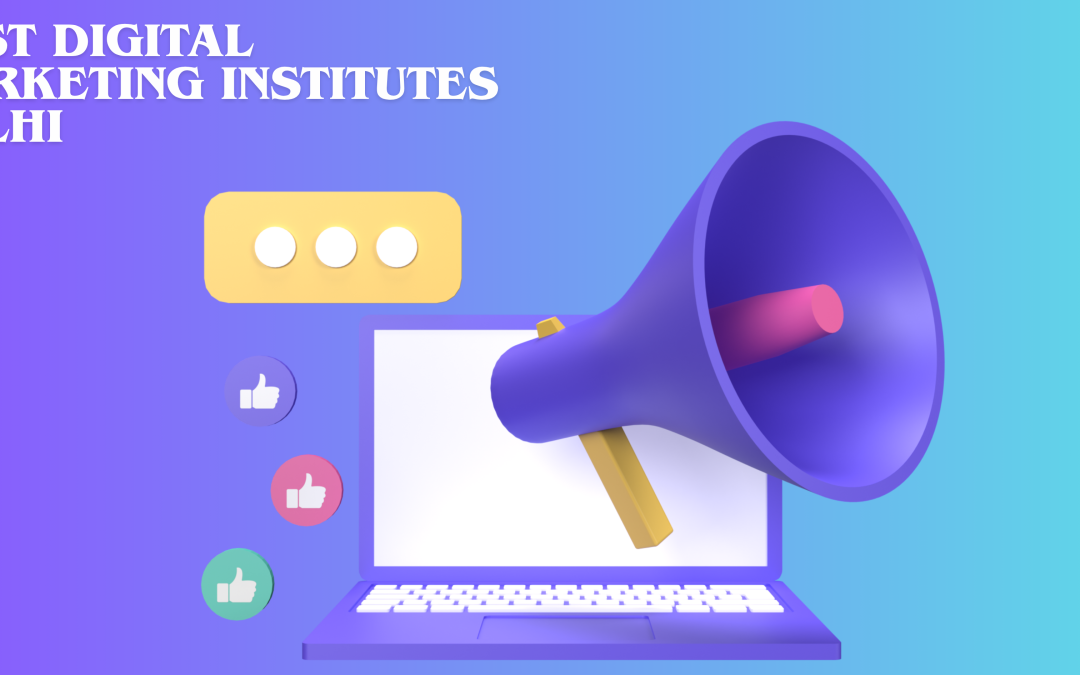
by Shashikanth Heerekar | Jul 10, 2025 | All Things about Marketing
Explore the top digital marketing institutes in Delhi offering expert training in SEO, social media, PPC, and more to boost your career in the online world.
Introduction
In today’s rapidly evolving digital world, every business grows from a small store to a major brand. This is why digital marketing skills are in demand everywhere. Whether it’s SEO, social media marketing, paid advertising, or content creation, companies are always seeking professionals who can help them grow online. If you are someone who wants to make a career in this field or upgrade your skills, then the best place to start learning is from a reputable digital marketing institute.
Delhi, as the capital, has become a hub for top-quality digital marketing institutions. These institutions not only provide practical training but also help students understand the real-world needs of the digital industry. From class sessions to live projects, courses are designed to prepare for a job.
It plays a big role in choosing the right institution and how well you learn. A good institution does not just teach you tools and technology – it guides you, cleans your doubt, puts personal attention and, most importantly, helps you grow with confidence.
In this blog, we will discover some of Delhi’s best digital marketing institutions that can help you kick your journey in this exciting industry.
ITTCD Institute
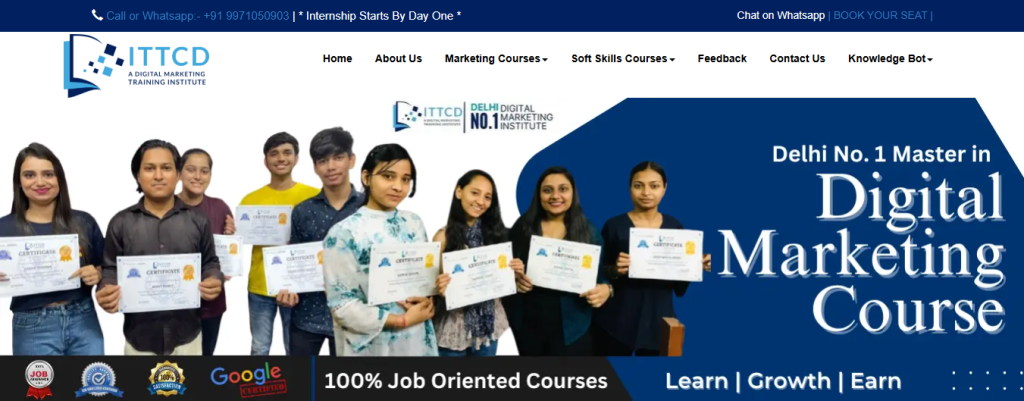
If you’re looking for a digital marketing institute in Delhi that’s focused on practical learning and real results, IT Training Course Delhi is a great option to consider. They offer a wide range of digital marketing courses designed for students, working professionals, and even business owners who want to understand how online marketing works.
What I liked about them is that they don’t just stick to theory—they focus a lot on hands-on training. You get to work on live projects, and the trainers seem experienced and supportive. Their course covers everything from SEO, social media, and Google Ads to content marketing and analytics.
Another benefit is that they offer both classroom and online training options, which is particularly helpful if you’re managing work or college responsibilities. Additionally, they provide certification after the course and offer assistance with placements, which is a significant advantage for fresh graduates.
Overall, if you’re serious about learning digital marketing in Delhi and want proper guidance, this institute is a reliable place to start.
Below are the contact details,
Website: www.ittrainingcoursedelhi.in
Mobile Number: +91 99710 50903
Email ID: [email protected]

by Shashikanth Heerekar | Jul 8, 2025 | All Things about Marketing
Discover the top digital marketing companies in Delhi offering SEO, social media, PPC, and more to help your business grow online.
Introduction
In today’s digital world, online appearance is more important than ever. Whether you run a small business, launch a startup, or manage a large brand, digital marketing plays a crucial role in attracting customers, building trust, and driving sales. From SEO and social media to ads and content marketing, the right digital marketing strategy can take your business to the next level.
Delhi is one of the fastest-growing trading centers in India, home to hundreds of digital marketing agencies. But with so many options, how do you know which ones are right for your business? This guide is there.
In this article, we have compiled a list of the top digital marketing companies in Delhi based on our services, customer reviews, experiences, and results. These agencies specialize in various fields, including Search Engine Optimization (SEO), Social Media Marketing (SMM), Pay-Per-Click (PPC), website design, email marketing, and more. No matter what your business type or budget, you will find a company that can meet your digital goals.
Therefore, if you are ready to develop your brand online and need the right team to guide you, then continue reading about the best digital marketing companies.
Innovative digital marketing
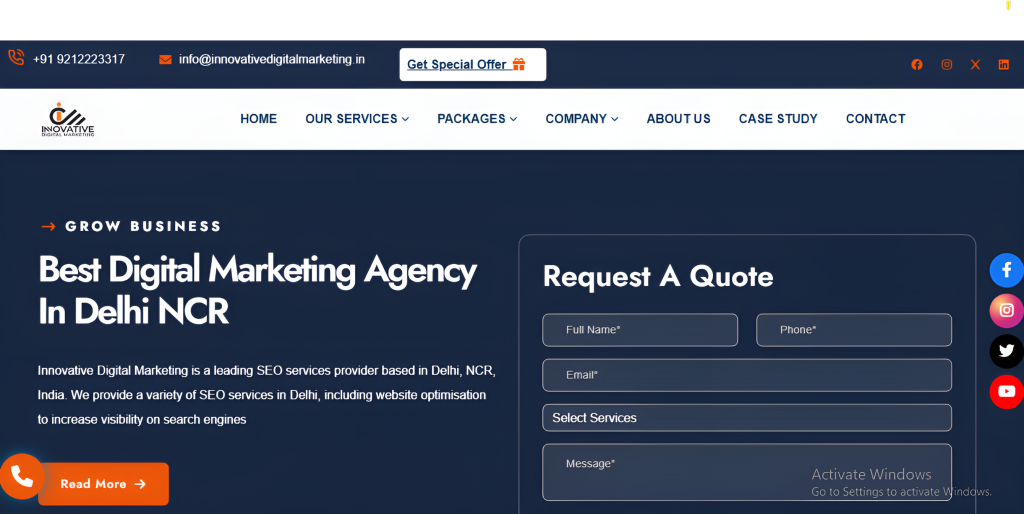
Innovative Digital Marketing has been around for 14 years, and over time, it’s become one of Delhi’s go-to digital marketing agencies—known for creating smart, result-driven strategies that actually work for today’s businesses. With a strong focus on creativity, performance, and customer satisfaction, they offer a wide range of services, including SEO, Google Ads, social media marketing, web design, and more. Whether you’re a small startup or a large enterprise, Innovative Digital Marketing helps you grow your online presence and drive measurable results.
What sets them apart is their team of experienced professionals who combine data, design, and digital tools to craft effective marketing campaigns. Their goal is simple—to help brands connect with the right audience at the right time through the right channels.













